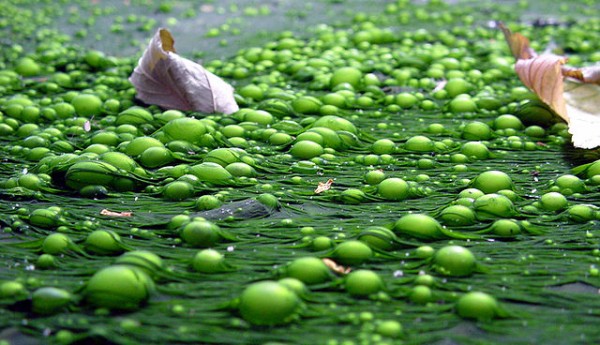
We have, each of us, 10 trillion cells. This proves we’re alive, because life comes with one or more cells. Life is cellular. Cells come in two basic types—eukaryotic (with a membrane-bound nucleus) and prokaryotic (with no nucleus). Eurkaryotes (you CARRY oats) encompass fungi, algae, slime molds, plants, protozoa, and animals, including us. Prokaryotes (pro CARRY oats) include bacteria and archaea (ar-KEY-a). Bacteria and archaea are more different from each other than dinosaurs are different from dogs. They are chemically different. But both are prokaryotic.
Prokaryotes are tiny and many. Eukaryotes are bigger and many fewer. Prokaryotes are ancient. Eukaryotes evolved later. Archaea are all single-celled, and bacteria are virtually all single-celled. Eukaryotes can be single-celled but they have evolved multiple times into multi-celled beings.
So eukaryotes are us, and prokaryotes are them.
Except for one thing. Our mitochondria. These organelles live within the cell but outside its nucleus. (Our regular DNA spirals up inside the nucleus.) Mitochondria have DNA different than our regular DNA. The DNA in our mitochondria is not spiral-shaped but circular and super-coiled, just like that of—guess what?—bacteria. Mitochondria, not incidentally, have a double membrane.
Flashback two billion years. A bacterium is lolling about in some fluid medium, call it water, and, whoops, here comes a eukaryotic cell, a single-celled eukaryote, and engulfs it, surrounds it with itself, thinking breakfast. Our bacterium has now been eaten alive. But it declines to be digested. It lives. And by the way, things are not so bad in here. For one thing, it is now protected; it has a house. For another thing, it can dine on morsels its new eukaryotic companion captures. Now, this eukaryotic cell metabolizes its energy by anaerobic means—without oxygen. Our bacterium in residence gets its energy by using oxygen—way more efficient—and this efficiency now accrues to the benefit of the eukaryote. This arrangement is turning out rather well.
Gradually this new type of cell, eukaryotic but with a few bacteria in for the ride, evolved into a multi-celled creature, and eventually (skipping a few steps here) into us. The bacteria became our mitochondria.
This is the once-controversial theory of endosymbiosis proposed in the 1960s by Lynn Margulis. One reason it is now accepted is our mitochondria’s double membrane. If you were engulfed by a single-celled blob, you would have your own skin and you would also be surrounded by a second skin, the skin of the blob. You would now have a double membrane. But genomics clinched the argument. Our mitochondria are close kin to bacteria.
So we are us, and we are them too. And that, in short, is life.

